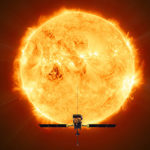
NASA officially confirms the existence of more than 5,000 exoplanets beyond our solar system, including Earth-like rocky worlds, gas giants several times larger than Jupiter, and even “mini-Neptunes,” which are basically smaller versions of our system’s Neptune. However, this is just a droplet in the vast ocean of the Milky Way, since our galaxy likely contains hundreds of billions of such planets.
What made many of these discoveries possible is the Transiting Exoplanet Survey Satellite (TESS), launched in 2018, but soon, even more powerful next-generation telescopes, along with their highly sensitive instruments, will accelerate these findings. It all starts with the recently launched James Webb Space Telescope, set to capture light from the atmospheres of exoplanets, reading which gases are present to potentially identify habitable worlds. The Nancy Grace Roman Space Telescope is set to launch in 2027 and intends to speed up exoplanet discoveries using a variety of methods.
- Compact and portable: This telescope for adults and kids to be used together is ideal for weekend camping trips or excursions to dark sky sites; Its...
- Flash upgradeable hand control software and motor control units for downloading product updates over the Internet
- SkyAlign allows you to align on any three bright celestial objects, making for a fast and easy alignment process
It’s not just a number. Each one of them is a new world, a brand-new planet. I get excited about every one because we don’t know anything about them,” said Jessie Christiansen, science lead for the archive and a research scientist with the NASA Exoplanet Science Institute at Caltech in Pasadena.






